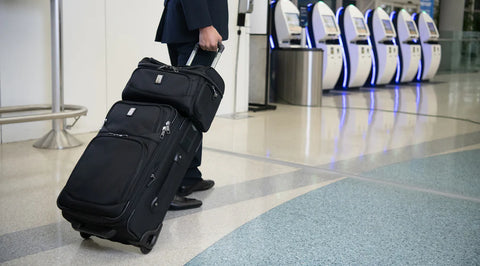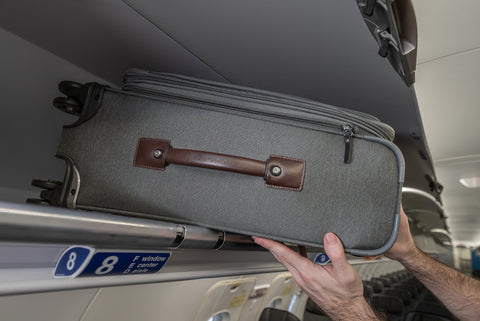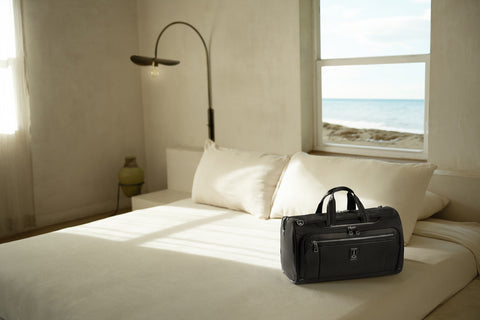COVID-19 has forced many companies to re-evaluate how they conduct public business domestically and internationally. From small towns to whole countries, the social atmosphere has changed how we interact. At the same time, it has disrupted business travel plans throughout the year and well into 2021.
While business travel has significantly slowed down, some business travelers still enter the near-empty planes and sleep in mostly empty hotels to make business meetings happen the old fashioned way: face-to-face.
Writing for Business Travel News, Craig Fichtelberg said “the goal should be to maximize travel program productivity. To achieve this, you need to increase the output (business value) as a percentage of the input (travel costs).”
He said that basically since we’re in a business travel slowdown, now is the time to see how we can make business travel much more efficient. This isn’t just a “how to make your business trips more efficient,” but how to make your company’s business travel as a whole much more cost-effective and efficient.
To start, you need to look at the one valuable asset that your company has if you want to create efficient and effective business travel: time
Travel & Expense (T&E) executives know that expenses need to be monitored efficiently. However, they should also know that time is one asset that needs to be used more effectively to achieve the overall goal of productivity. They can help rewrite their employers’ business travel policies and philosophies and redefine how corporations manage business travel.
So how can business travelers use their company’s time more effectively?
SEE WHAT WORKS, DISCARD WHAT DOESN’T
Business travel may have low participation right now, but businesses are still sending employees out on the road. And with a lot less going on in business circles, this is a good time to start reviewing past trips and seeing what business resulted from the actual trips. Were there any sales? Did it generate leads? Did that trade show lead to any new business, or did it lose more than it made?
Hopefully, you’ve been keeping track of past trips already, but now is the time to start tying in new clients into your lead generation efforts and business travel. Try to show how each lead and each sale connects to a past business trip or trade show. Maybe you can find the trips and trade shows that make the most money and root out the ones that don’t make any.
This can help future trips bring in a higher ROI and help you determine if they should be face-to-face meetings or video conferences, and whether certain trade shows and conferences are worth the expense.
Your business travelers should answer these questions for themselves and you while on their next trips:
- Did I make a better connection with the other party that would not be apparent in videoconferencing?
- Can I see myself doing business at this location in the future?
- Was I more coherent in that environment rather than at home office?
- Am I satisfied with the trip overall? How will it be helpful to the company?
To make business travel successful, says Fichtelberg, your travelers need to feel valued.
Travelers should be treated as people and not line items on an expense report. Is there really a need to take a red-eye flight to meet with a customer the next morning? If you want them to work while on the flight, then pay more for them to have room to work. If they need to get to the airport hours before their flight for screening, have them wait in an airline club. And if disruptions occur while they are on the road, make sure they have access to assistance 24/7. Giving travelers the comfort of both some breathing room and support will reduce their stress and maximize performance when traveling.
Each traveler has certain patterns that affect how well they work. Early morning flights don’t go well for a traveler who is a night owl. Scheduling meetings with seafood as the main course may not go so well for your traveler who is allergic to shellfish.
Letting your travelers have a say in the setup of their trips will not only help them feel valued and important, but it will help them find the options that suit them and their ideal functionality. And if you’re worried about an employee not doing what he or she is supposed to, that’s why you’re measuring all your trips now. You’ll be able to spot the inefficient travelers quickly.
SWITCH TO A MONTHLY-SUBSCRIPTION FEE
Business travel is always costly, but it does not have to be extravagant in price. There are ways to save money and not feel like much money was wasted in the process.
For example, there are travel programs that allow companies to have subscriptions rather than buying a number of multiple items that fluctuate and throw off your travel budget for each month. From airplane tickets to hotel stays to transportation fees, expenses can stack up if not properly monitored and regulated well. A monthly subscription plan, such as an airport lounge, ride-sharing, or even wifi hotspots, can help you save money on frequently-used travel providers.
UNUSED TICKETS
Because the pandemic has caused a push for companies to cancel trips, unused tickets are piling up. Since airlines typically do not refund tickets, your company could be wasting money with those tickets not being used.
Make sure they either get used for upcoming trips or push for travel vouchers from the airlines so you don’t have to buy tickets next year when people are expected to resume traveling. This will help you recover some of your funds that have been tied-up in refund limbo.
How is your company making its business travel more efficient? Are you conducting an overhaul to your company or measuring your past results? Tell us about it on our Facebook page, or on our Twitter stream. You can also find us on our Instagram page at @TravelproIntl.
Photo credit: Free-Photos (Pixabay, Creative Commons 0)



